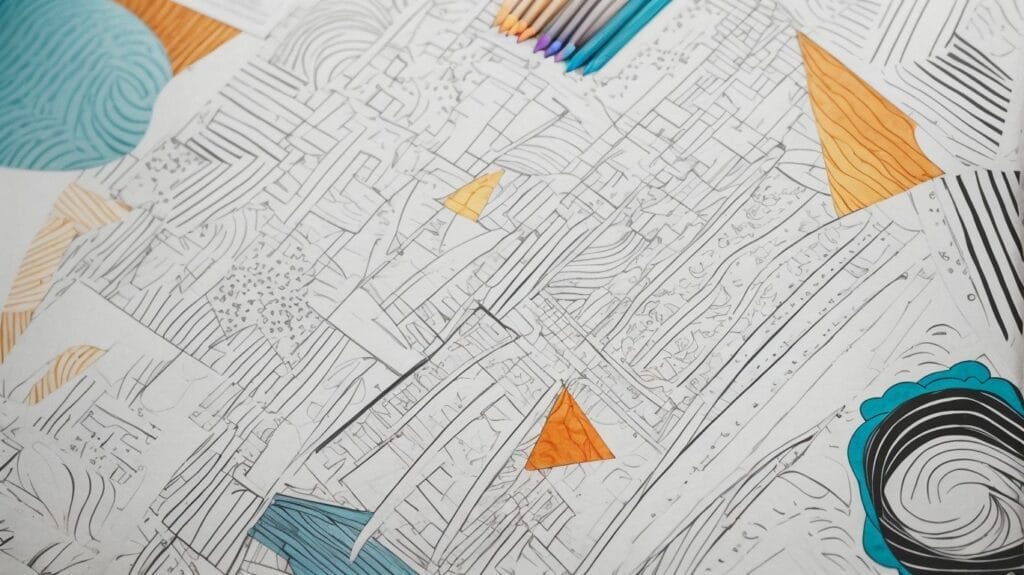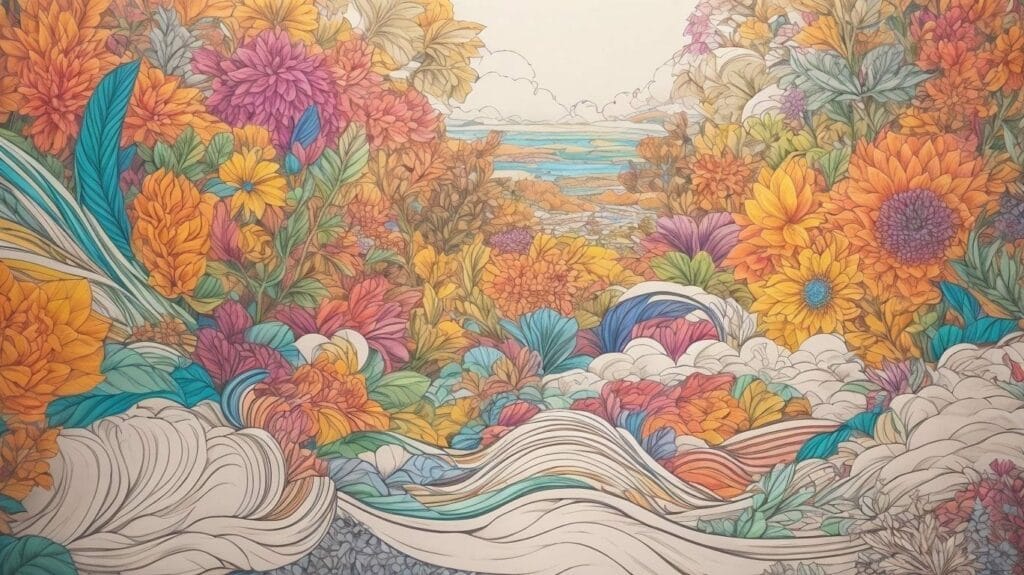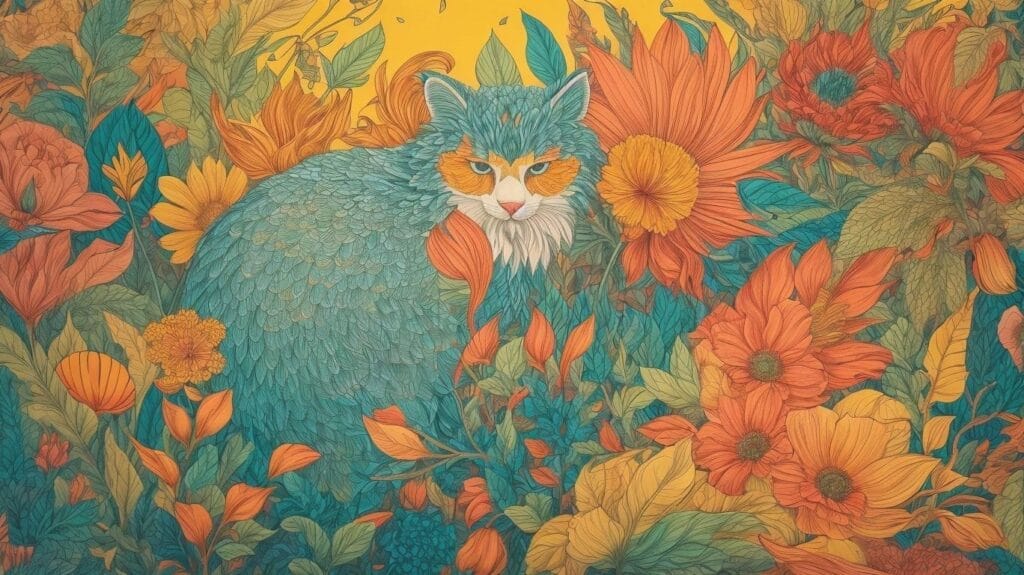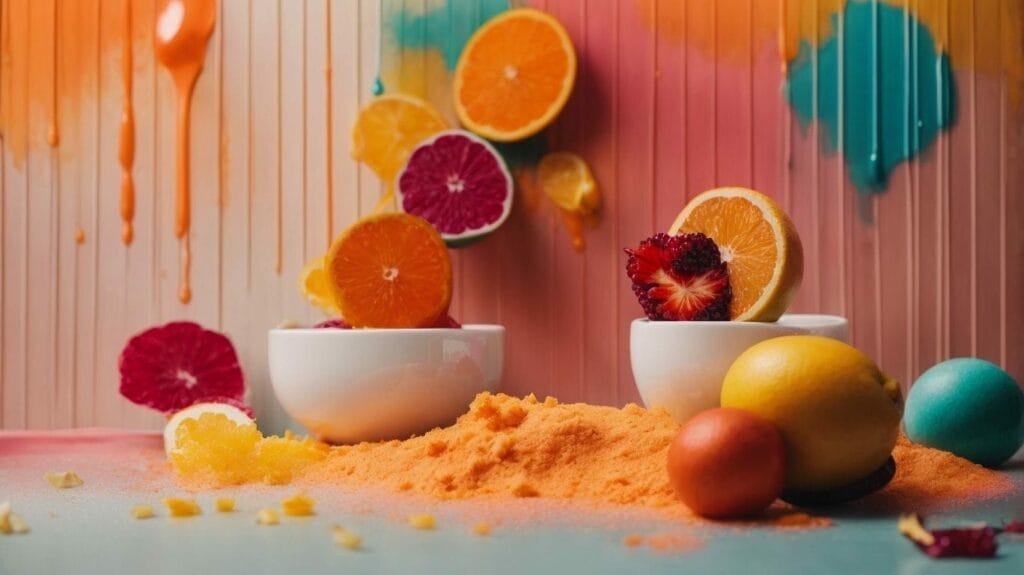Are you a beginner looking to enhance your coloring skills? Whether you’re a hobbyist, an aspiring artist, or simply seeking a creative outlet, mastering the basics of coloring techniques can open up a world of artistic possibilities.
In this comprehensive guide, we’ll delve into the fundamental foundations of coloring, from understanding different coloring techniques to exploring the versatile applications of colored pencils and markers. You’ll gain insights into basic, intermediate, and advanced colored pencil techniques, as well as the art of blending, shading, and combining markers and pencils to create captivating effects.
We’ll provide invaluable tips for coloring backgrounds, selecting color palettes, and point you towards valuable resources for further improvement. Whether you’re looking to elevate your coloring skills or simply seeking inspiration, this guide is your essential companion on your coloring journey.
Key Takeaways:
Introduction to Beginner Coloring Techniques
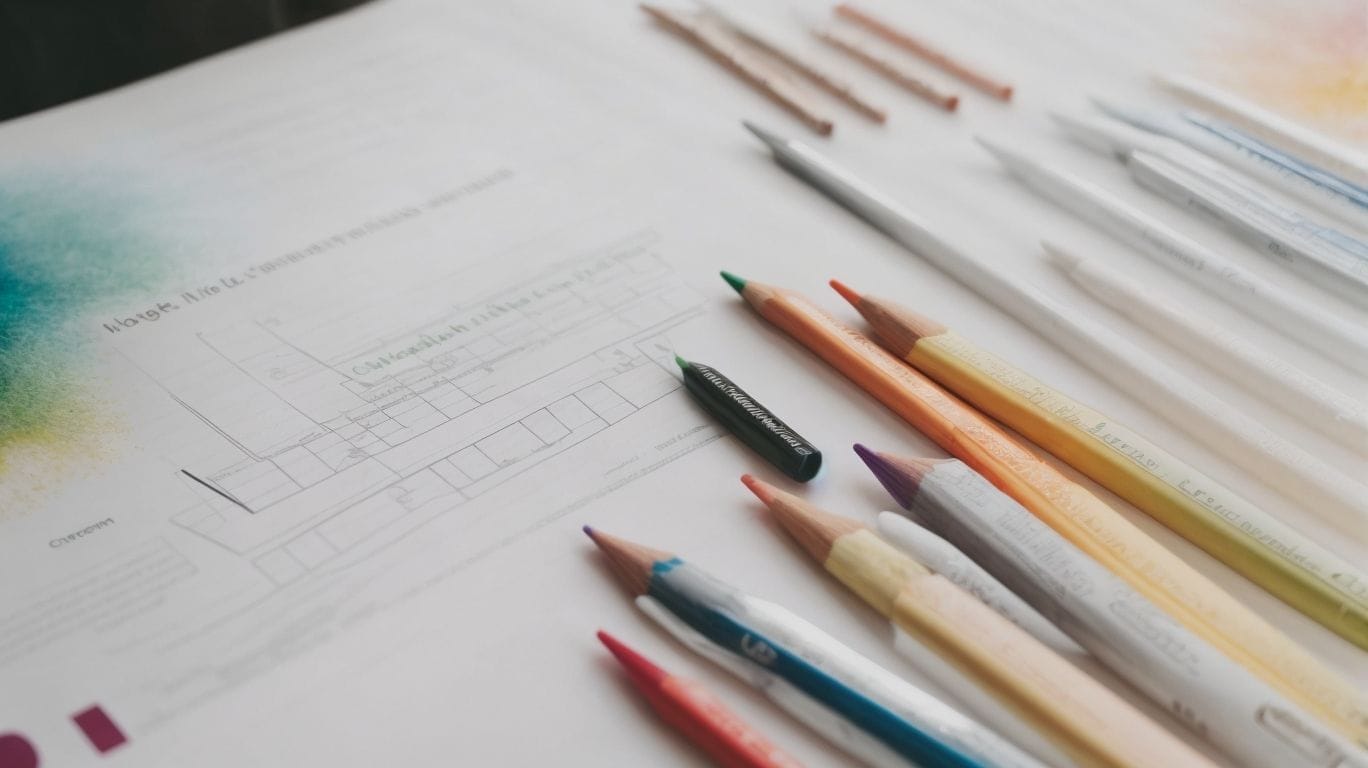
Credits: Loststorystudios.Com – Edward Hill
Welcome to the world of beginner coloring techniques, where aspiring artists and hobbyists embark on a colorful journey of creativity and self-expression through various mediums and styles.One of the most popular mediums for beginner coloring enthusiasts is alcohol markers. These vibrant and blendable markers offer a smooth, professional finish and are perfect for creating gradients and layered effects. Additionally, colored pencils provide a versatile and controlled coloring experience, allowing for intricate details and shading.
As you explore adult coloring books, you’ll encounter a wide range of designs, from intricate patterns to detailed scenes, providing ample opportunities to practice different coloring techniques and experiment with blending.
Understanding Coloring Techniques
Before diving into the intricacies of coloring, it’s essential to grasp the foundational aspects of coloring techniques, encompassing the use of diverse coloring supplies, art markers, and the availability of online art lessons for guidance and inspiration.Understanding the characteristics of various coloring supplies such as colored pencils, watercolor paints, and pastels is crucial for executing different coloring techniques. Art markers, including alcohol-based and water-based options, offer distinct advantages in layering and blending colors.
Accessing online art lessons provides practical insights into color theory, shading, and composition, cultivating a comprehensive understanding of how to apply these techniques effectively.
Colored Pencil Techniques for Beginners
Embarking on the journey of colored pencil techniques for beginners opens the door to a world of vibrant hues, delicate shading, and the acquisition of essential skills for novice colorists.
Understanding the art of layering colors to create depth and dimension is a fundamental part of colored pencil techniques. Learning to blend colors seamlessly and master the art of shading brings life to drawings. Embracing foundational tutorials that teach how to control pressure, understand color theory, and create smooth transitions enhances the skills of budding artists stepping into the world of colored pencils. These techniques unlock the potential to transform imagination into stunning artwork.
Basic Colored Pencil Techniques
Mastering basic colored pencil techniques serves as the cornerstone for budding artists, providing insights into coloring basics, tutorial videos for guidance, and the art of creating vibrant blends and transitions.
Understanding coloring basics is essential for anyone working with colored pencils. It involves knowing how to layer colors, create textures, and blend shades seamlessly. Tutorial videos play a pivotal role in refining these skills, offering step-by-step demonstrations and valuable tips.
Regarding creating vibrant blends and transitions, experimenting with complementary colors, blending pencils, and utilizing pressure variations all contribute to achieving stunning and dynamic results.
Intermediate Colored Pencil Techniques
Transitioning to intermediate colored pencil techniques signifies an elevated exploration of artistry, looking into advanced methods, incorporating texture, and seeking recommendations for enhancing colored pencil renditions.As artists progress to an intermediate level, they often seek to enhance their colored pencil artwork with more depth and complexity. Diverse coloring methods, such as layering, blending, and burnishing, become focal points, enabling the creation of lifelike hues and gradients. Incorporating textured surfaces into their compositions adds an extra dimension to their work, further elevating the visual impact.
It’s important for artists to select the right colored pencil brands that offer a wide range of colors, good lightfastness, and strong pigmentation. Brands like Prismacolor, Faber-Castell Polychromos, and Caran d’Ache Luminance are often recommended for their quality and versatility in achieving intricate coloring effects.
Advanced Colored Pencil Techniques
For those aspiring to reach the pinnacle of colored pencil artistry, advanced techniques offer a pathway to mastery, enabling the use of vibrant colors, honing the coloring process, and learning from the expertise of professional artists.
Exploring advanced colored pencil techniques involves a deep understanding of color theory, blending, layering, and creating intricate details. Professionals often emphasize the usage of vibrant colors to bring life to the artwork. Learning from their experiences, artists adeptly manipulate hues to evoke emotions and depth in their illustrations. The intricate coloring process demands patience, precision, and a keen eye for detail. Integrating these diverse elements elevates the artwork, transforming it into a captivating masterpiece.
Marker Techniques for Beginners
Embarking on the exploration of marker techniques for beginners opens the gateway to a realm of creativity, encompassing insightful marker tutorials, the portrayal of captivating alcohol marker portraits, and the utilization of blending solvents for artistic expression.
Learning to work with alcohol markers involves understanding techniques such as layering, blending, and shading to create depth and dimension in artwork. With an array of online resources dedicated to beginner-friendly tutorials, individuals can enhance their skills in using alcohol markers for various art forms.
Several courses offer free alcohol markers as part of their learning package, making them accessible to aspiring artists seeking to delve into this medium.
Introduction to Alcohol Marker Techniques
The initial foray into alcohol marker techniques serves as a gateway to crafting vibrant works of art, featuring enriching marker tutorials, the utilization of advanced coloring techniques, and the availability of instructional videos for comprehensive learning.Exploring the realm of marker tutorials can provide valuable insight into foundational techniques such as blending and shading. Familiarizing oneself with advanced coloring techniques like layering and color harmonization can elevate artwork to new heights of complexity and beauty.
Instructional videos play a pivotal role in the learning process, offering visual demonstrations and step-by-step guidance to master various alcohol marker techniques. Whether it’s learning how to create lifelike textures or understanding the intricacies of color theory, these resources give the power to artists to refine their skills and expand their creative repertoire.
Blending with Alcohol Markers
Mastering the art of blending with alcohol markers involves the seamless fusion of vibrant blends, experimentation with a variety of media, and the integration of gel pens for adding depth and dimension to artistic creations.
When creating vibrant blends with alcohol markers, it’s essential to understand the alcohol-based ink’s ability to mix and layer colors. Tapping into the potential of diverse media, such as blending solutions, can further elevate the richness of the blends. Utilizing a blending palette or non-porous surfaces can also aid in achieving smooth transitions between hues.
Expanding the scope of creativity, artists can seamlessly merge gel pens into their artwork, enhancing intricate details and adding texture. Integrating these varied techniques enables artists to master the complexity of blending with alcohol markers, unlocking a world of artistic possibilities.
Shading with Alcohol Markers
Exploring the nuances of shading with alcohol markers unveils a world of vibrant expressions, featuring engaging blending techniques, step-by-step demonstrations, and the utilization of paint pens for intricate detailing and highlights.Alcohol markers, known for their rich pigments and smooth application, offer artists the ability to create stunning depth and dimension. Regarding blending, layering lighter shades over darker ones or using a colorless blender pen can produce seamless transitions, adding a professional touch to artwork.
Step-by-step demonstrations can simplify this process, guiding artists through the intricacies of shading and blending to achieve captivating results.
To enhance the intricacy of designs, paint pens can be utilized for adding intricate detailing, such as fine lines, intricate patterns, or highlight accents.
Combining Marker and Pencil Techniques
The fusion of marker and pencil techniques offers a dynamic approach to artistic expressions, blending the artistry of marker tutorials with the finesse of colored pencil shading, creating mesmerizing gradients, and seamlessly integrating color markers and pencils for captivating renditions.Embracing this harmonious synergy allows artists to explore a multitude of creative possibilities, with marker techniques enabling vibrant, bold strokes, while colored pencils bestow intricate details and soft transitions. With the plethora of online resources, artists can delve into tutorial videos and step-by-step guides, mastering various shading applications and learning to envisage how gradients can be skillfully manipulated to convey depth and realism in their works. This dual approach also enables the juxtaposition of vibrant marker tones with the blendable nature of colored pencils, resulting in a visually stunning amalgamation of colors and textures.
Blending Markers and Pencils
The harmonious blending of markers and pencils extends to the art of creating lifelike skin tones, leveraging the versatility of copic markers, adding texture to enrich artistic expressions, and utilizing white pen highlights for enhancing focal points and details.
When crafting lifelike skin tones, it’s essential to understand the interaction between different tones and undertones. Copic markers, known for their alcohol-based ink and wide color range, are ideal for achieving smooth gradients and transitions in skin tones. The incorporation of pencils allows for fine details and subtle nuances, elevating the depth and realism within the artwork.
Texture plays a pivotal role in bringing depth and dimension to the portrayal of skin in artwork. Utilizing various techniques such as stippling, cross-hatching, or blending with solvents can create the illusion of pores, wrinkles, or smooth surfaces, adding a tactile quality to the artwork.
Creating Textures with Marker and Pencil Combinations
Exploring the realm of textures with marker and pencil combinations involves the utilization of a color catalog, specialized tooth paper, and tooth pages to achieve captivating tactile elements in artistic masterpieces.Understanding the different types of textures that can be achieved with marker and pencil combinations is essential for creating depth and dimension in artwork. The color catalog serves as a valuable reference, providing a wide range of hues and tones to inspire the artist’s imagination.
Regarding the paper, the tooth or texture of the paper plays a crucial role in the final outcome. Specialized tooth paper is designed to hold the pigment from markers and pencils effectively, allowing for rich and vibrant colors to be applied with ease.
The use of tooth pages can further enhance the tactile experience by incorporating different textures and patterns into the artwork, adding a unique and dynamic element to the composition.
Coloring Backgrounds and Color Palettes
Delving into the art of coloring backgrounds and crafting captivating color palettes elevates artistic endeavors, encompassing vibrant background creation, seamless color transitions, and the harmonious blending of hues for enchanting renditions.
To create striking backgrounds, one can experiment with layering different colors, gradients, and patterns to achieve depth and visual interest. By utilizing complementary or analogous color schemes, the artwork can exude a sense of balance and cohesion.
When incorporating vibrant backgrounds, it’s imperative to consider the overall mood and theme to ensure that the color palette complements the subject matter and evokes the desired emotions in the viewer. Employing subtle variations in tone and saturation can add dimension and complexity to the background, enhancing its visual appeal.
Techniques for Coloring Backgrounds
Mastering techniques for coloring backgrounds involves the art of creating seamless gradients, adding captivating textures, drawing inspiration from the expertise of professional artists, and infusing vibrant colors for visually stunning backgrounds.
Creating seamless gradients requires a delicate balance of blending complementary hues and understanding light and shadow. Adding captivating textures involves experimenting with various brush strokes and layering techniques to achieve depth and visual interest. Seeking guidance from professional artists can provide valuable insights into composition, color theory, and creating impactful backgrounds.
Infusing vibrant colors, such as neon electric blues and bold crimson reds, can enhance the energy and mood of the artwork, making the background pop with life.
Choosing and Creating Color Palettes
The selection and formation of color palettes stand as key elements in the creation of vibrant works of art, drawing inspiration from diverse sources, including the integration of free alcohol markers courses and the allure of butterfly color schemes for captivating renditions.Color palettes play a significant role in conveying emotions, setting the tone, and creating visual impact in artworks. The choices of hues, tones, and shades can evoke specific moods or enhance the overall appeal of an artwork. Through free alcohol markers courses, artists can explore the use of bold and dynamic color combinations, allowing for vibrant artistic expressions that command attention.
The allure of butterfly color schemes provides a fascinating source of inspiration for artists. The stunning array of colors found in butterfly wings offers a rich palette of possibilities, from vivid primaries to soft pastels, enabling artists to infuse their creations with striking and harmonious color compositions.
Additional Tips and Resources
Aspiring colorists can enhance their skills through additional tips and resources, including strategies for improving coloring proficiency and the value of signing up for comprehensive coloring tutorials and newsletters to stay updated with the latest trends and techniques.One effective way for aspiring colorists to improve their skills is by practicing regularly and seeking feedback from mentors or peers. Participating in online coloring communities or groups can provide valuable insights and constructive criticism.
Moreover, subscribing to newsletters from industry experts can offer access to exclusive tips, tutorials, and updates, keeping colorists informed about new products, coloring mediums, and emerging trends.
Taking advantage of specialized coloring tutorials can offer comprehensive guidance on various techniques such as blending, shading, and color theory. These tutorials often provide step-by-step demonstrations and practical exercises to advance proficiency.
Exploring coloring resources and guides designed by experienced artists can provide inspiration and insights into different styles and approaches to coloring.
Improving Coloring Skills
Continuous growth and enhancement of coloring skills are pivotal for a beginner colorist’s journey, leveraging the insights from tutorial videos, mastering the art of vibrant blends, and exploring the guidance offered by adult coloring tutorials for comprehensive development.
One effective strategy for improving coloring skills is to choose vibrant blending techniques that bring out the depth and richness of colors. Emulating the blending methods demonstrated in tutorial videos can aid in acquiring a better understanding of color interactions.
Adult coloring tutorials provide invaluable assistance for honing skills such as shading, layering, and creating harmonious color schemes, which are essential for elevating one’s coloring proficiency.
Signing Up for Coloring Tutorials and Newsletters
Engaging with coloring tutorials and newsletters presents a valuable opportunity for aspiring artists, providing access to diverse tutorials, the exploration of 10 different techniques, and the incorporation of color gel pens for enriching artistic expressions.
Through these tutorials, individuals can learn about various styles, from intricate mandalas to vibrant landscapes, and experiment with techniques such as shading, blending, and highlighting. Subscribing to newsletters offers a constant source of inspiration, updates on new tutorials, and exclusive discounts on art supplies, including color gel pens.
The guidance and tips provided through these resources can significantly enhance an artist’s proficiency and creativity.
Frequently Asked Questions
What are some essential beginner coloring techniques?
Some essential beginner coloring techniques include blending, layering, shading, and highlighting. These techniques help create dimension and depth in your coloring.
How do I blend colors as a beginner?
To blend colors as a beginner, start by choosing two or more colors that are similar in hue. Use a light touch and small circular motions to blend the colors together, gradually building up the intensity. You can also use a blending tool such as a blending stump or marker to help create a smoother blend.
What is layering in coloring?
Layering is the technique of adding multiple layers of color on top of each other to create depth and richness in your coloring. This can be achieved with colored pencils, markers, or other coloring mediums.
How can I practice shading as a beginner?
A simple way to practice shading as a beginner is to start with a basic shape, such as a circle or square, and shade in one side using a darker shade of your chosen color. Then, gradually blend in a lighter shade towards the opposite side to create a shaded effect.
What are some beginner-friendly coloring supplies?
Some beginner-friendly coloring supplies include colored pencils, markers, crayons, and gel pens. These are easy to use, readily available, and come in a variety of colors to help you create your desired coloring effects.
Can I use reference images for beginner coloring?
Yes, using reference images can be a helpful tool for beginner coloring. It can give you a starting point and inspiration for color choices and techniques. However, it’s important to also practice creating your own original artwork to develop your skills and style.
